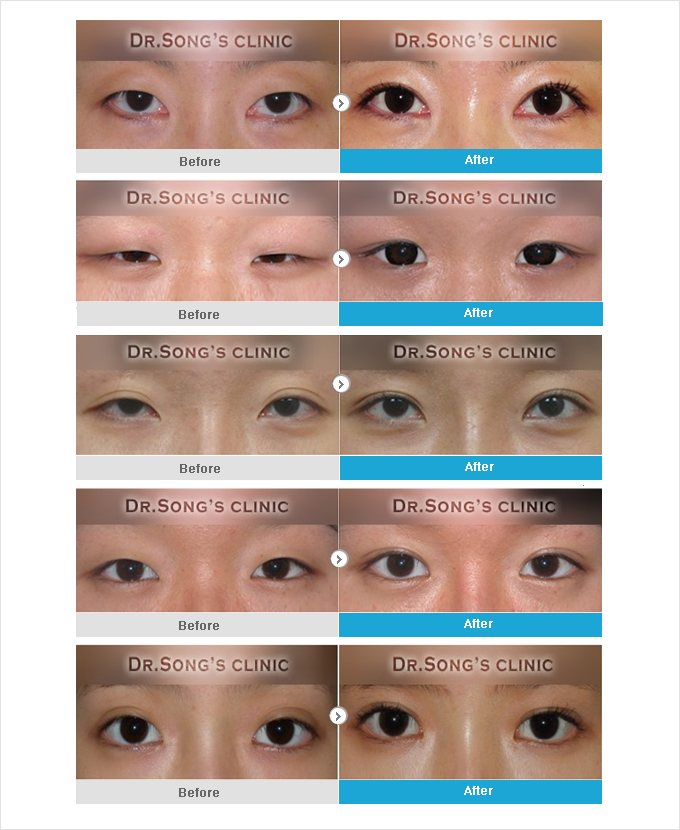- Minimal incision, continuously buried Method
 > Eye Surgery > Minimal incision, continuously buried Method
> Eye Surgery > Minimal incision, continuously buried Method
Minimal incision, continuously buried Method
- Our clinic’s minimal incision continuously buried method completely treats fat deposits around the eyes and septum as in partial incision from inside but from outside surgeries are done through tiny holes so no scars are visible as in buried methods. In other words, it enjoys all the benefits of partial incision surgery but hides surgical scars. From patients’ perspective, this would be the best option in long term.
Difference with existing buried methods
- Existing buried method involves 3 or 4 holes through which each knot is tied separately. They often come untied and each knot can show through. So these days, high end plastic surgeries in Asia prefer continuous buried method. Continuous buried method is where buried suture forming double eyelids is continuous and will end up in one single knot. Therefore “Single Knot, Continuous Buried Method” or “Continuous Buried Method” means the same surgery. Single knot continuous buried method operates through 3 or 4 small holes of 1mm and therefore not possible to treat orbital fat or septum and recommended for relatively thick and less sagging eyelids.
- With eyelids which are thick and fatty, there is a high possibility knots can become loose with single knot, continuous buried method. Our clinic’s Minimal incision, continuous buried method completely eliminates unnecessary orbital fats and septum from inside as with partial incision but at the same time, identical to continuous buried method from the outside. Normally as mentioned above, buried method is performed through 3 or 4 1mm holes but it is difficult to eliminate fats on outer side of eyelids and the line looks disconnected and often come untied. We make the last hole on the outside to be 2mm wide and perform partial incision through there. This way, all the benefits of partial incision surgeries are carried out inside whilst surgical scar from the surgery is not visible. There is a very small chance knots will be untied and this is the best surgical method from patients’ perspective.
- As a reference, usually partial incision also called half incision involves an incision on outer half of eyelid to perform surgery and buried method in inner half. But in this case, it still has the advantage of knots not readily being untied, the result from the half incision can look more unnatural than with the complete incision method. So the classical partial incision method is not so desirable and the minimal incision, continuous buried method is much better.

 > Eye Surgery > Minimal incision, continuously buried Method
> Eye Surgery > Minimal incision, continuously buried Method